
Docking is a surgical procedure that involves removing a dog's tail, typically performed on breeds that have naturally short or stumpy tails.
This procedure can be done for various reasons, including to prevent injury, improve hygiene, and enhance the dog's appearance.
In some breeds, docking is considered essential for their traditional appearance, such as in certain types of hunting dogs.
However, not all breeds require docking, and the decision to dock a dog's tail should be made with careful consideration.
What is Docking?
Docking is the amputation of part of a dog's tail for cosmetic or breed-specific reasons. This procedure is usually done on puppies during the first five days of life without anesthesia.
Several breeds are subjected to tail docking, including Doberman Pinschers, German Shorthaired Pointers, Miniature Schnauzers, Cocker Spaniels, and Rottweilers. Some breeds have naturally bobbed tails, such as Old English Sheepdogs or Australian Shepherds.
Tail docking is a painful procedure for dogs, and it's becoming less common due to its negative effects on a dog's welfare.
Risks and Complications
Docking a dog's tail can come with some serious risks and complications.
Bleeding is a common risk associated with tail docking in dogs.
Pain is another risk, as the procedure can be quite invasive.
Infection is also a possibility, which can lead to further complications.
Docking a dog's tail can heighten their general sensitivity to pain.
Some dogs may experience chronic pain in the tail after the procedure.
The sensitivity to touch can be uncomfortable for dogs, and may require ongoing veterinary care.
Here are some of the risks and complications associated with tail docking in dogs:
- Bleeding
- Pain
- Infection
- Heightened general sensitivity to pain
- Sensitivity to touch and chronic pain in the tail
Cost and Post-Op Care
The cost of docking your dog's tail can vary depending on several factors, including the location and the veterinarian's fees.
Typically, the procedure can cost anywhere from $30 to $100, although some veterinarians may charge more.
A dog's post-op care is relatively straightforward, with the tail stump generally healing in less than a week.
If a dog is experiencing continued bleeding, swelling, redness, or pus, a veterinarian should be contacted immediately.
Cost of
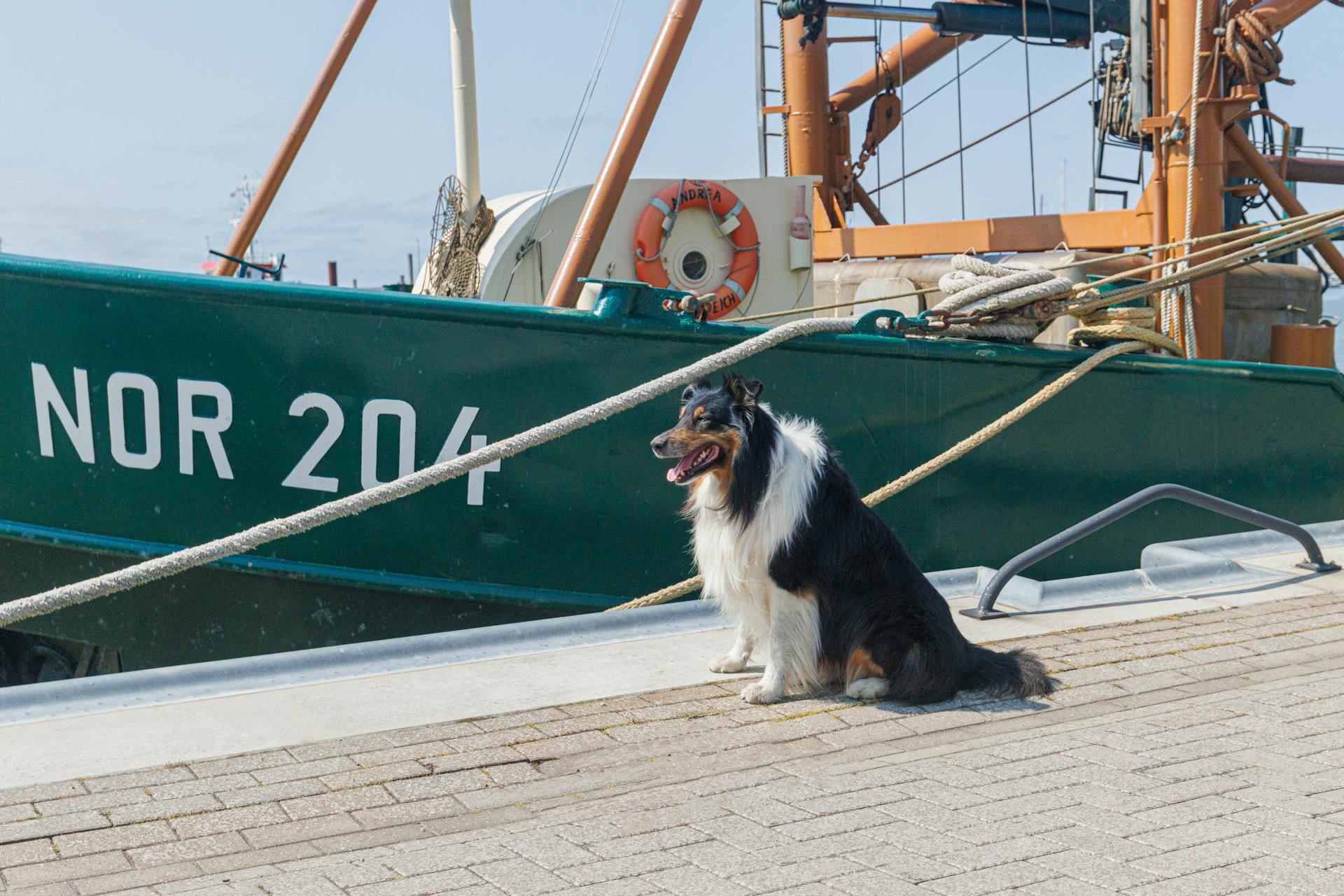
The cost of tail docking in dogs is typically around $20 per puppy, in addition to any exam fees. Insurance companies usually don't cover this procedure because it's considered cosmetic.
Exam fees can vary greatly, but they're often around $50 to $100. This cost is separate from the tail docking fee itself.
In some cases, the total cost of tail docking can be as high as $70 to $120, depending on the veterinarian's fees.
Post-Op Care
The post-op care for your furry friend is a crucial part of their recovery. The good news is that the tail stump generally heals in less than a week.
You'll want to keep an eye out for any signs of complications, such as continued bleeding, swelling, redness, or pus. If you notice any of these symptoms, contact your veterinarian immediately.
Alternatives and Exemptions
In England, the Animal Welfare Act 2006 has a general ban on tail docking of dogs, with some limited exemptions.
The exemptions to the ban are not clearly outlined, but it's worth noting that they do exist.
If you're looking for alternatives to tail docking, it's essential to understand the law and any possible exemptions in your area.
Worth a look: E Collar Ban Uk
Alternatives

If you're looking for a pup with a short tail, you can avoid tail docking in dogs and consider adopting a dog from a breed with a naturally bobbed tail, such as an Australian Shepherd.
Some dog breeds have naturally short or bobbed tails, which can be a great alternative to tail docking.
England Work Exemptions
In England, there are exemptions to the tail docking ban for working dogs.
Certain types of working dogs, such as spaniels, terriers, and hunt point retrieve breeds, are allowed to have their tails docked by a veterinary surgeon.
The veterinary surgeon must certify that the dog is likely to work in one of the specified areas, such as shooting animals with a shotgun or firearm.
To qualify, the puppy must be presented with its dam, and a statement provided by the owner must indicate that the dog is intended to work in one of the specified areas.
For your interest: How to Use Shock Collar for Barking
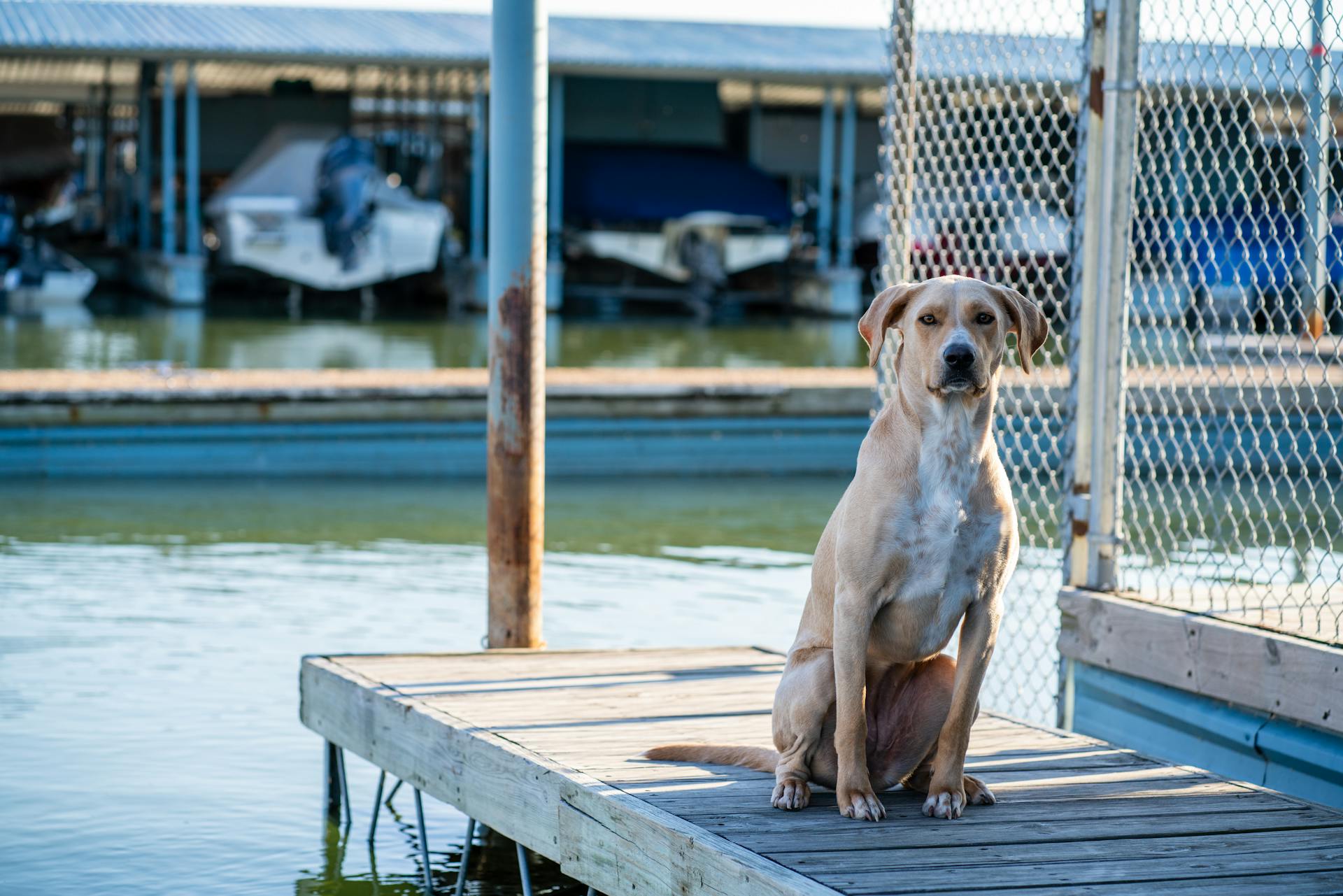
The dog must also be microchipped before it is three months old, and the veterinary surgeon's decision to dock the tail is discretionary.
Here are the specified areas where working dogs are allowed to have their tails docked:
- Shooting animals with a shotgun or firearm
- Other areas where working dogs are specified
It's worth noting that the dog's owner must provide a current shotgun or firearm certificate issued to the owner or their agent or employee.
Working in Wales Exemptions
If you own a working dog in Wales, you'll need to know about the exemptions to the tail docking ban. The ban has been in place since 27 March 2007.
Certain types of working dogs are exempt from the ban, including Spaniels, Terriers, and Hunt Point Retrieve breeds. These dogs can have their tails docked by a vet, but only under specific conditions.
The docking must be done when the dog is not more than five days old. The breeder or seller of the dog should provide a certificate, which you should receive.
See what others are reading: South Korean Parliament Endorses Bill Outlawing Dog Meat Consumption.

To qualify for the exemption, your dog must be microchipped before it is three months old. If you get the dog before it is three months old, make sure it is microchipped before taking ownership.
Only veterinary surgeons can decide whether a dog may have its tail docked. The decision is discretionary, and the legislation does not require a vet to dock an eligible dog's tail.
Here are the specific breeds that qualify for the exemption:
- Spaniels – English Springer Spaniel, Welsh Springer Spaniel, Cocker Spaniel (but not any combinations of breeds)
- Terriers – Jack Russell Terrier, Cairn Terrier, Lakeland Terrier, Norfolk Terrier (but not any combinations of breeds)
- Hunt Point Retrieve – Braque Italian, Brittany, German Long-Haired Pointer, German Short-Haired Pointer, German Wirehaired Pointer, Hungarian Vizsla, Hungarian Wire Haired Vizsla, Italian Spinone, Spanish Water Dog, Weimaraner, Korthals Griffon, Slovakian Rough Haired Pointer, Large Munsterlander, Small Munsterlander
These dogs can be used for specific purposes, including law enforcement, emergency rescue, and the lawful shooting of animals.
Showing Docked Animals
Showing docked animals can be a bit of a challenge, especially if you're planning to enter your dog into a show. A dog whose tail has been wholly or partly removed on or after 6 April 2007 may not be shown at any shows in England where the public are charged a fee for admission.
In Northern Ireland, it's a bit more complicated. A dog whose tail has been wholly or partly removed before 1 January 2013 may continue to be shown at all shows in Northern Ireland for the remainder of its natural life.
However, if your dog's tail was docked on or after 1 January 2013, you won't be able to show it at any shows in Northern Ireland where the public pay to get in.
Showing in Wales
If you're planning to show your docked dog in Wales, there are some important rules to follow. A dog whose tail has been wholly or partly removed before 28 March 2007 may continue to be shown at all shows in Wales for the remainder of its natural life.
Showing in Wales can be a bit tricky if your dog's tail removal occurred after a certain date. A dog whose tail has been wholly or partly removed on or after 28 March 2007 may not be shown at any shows in Wales where the public are charged a fee for admission, irrespective of where the procedure took place.
Showing Docked Animals
If you're planning to show a docked dog, you'll need to know the rules in your region. In England, a dog with a docked tail can't be shown at any public shows, unless it's for demonstration purposes.
In Northern Ireland, dogs with docked tails before 1 January 2013 can still be shown at all public shows for the rest of their lives. However, those docked after this date can't be shown at public shows.
In Scotland, while tail docking is banned, dogs with docked tails from other countries or regions can still be shown. This is a bit of a loophole, but it's worth noting.
In Wales, dogs with docked tails before 28 March 2007 can still be shown at all public shows for the rest of their lives. Those docked after this date can't be shown at public shows.
It's worth noting that these rules only apply to public shows where a fee is charged for admission. Private shows or demonstrations may have different rules.
Methods and Procedure
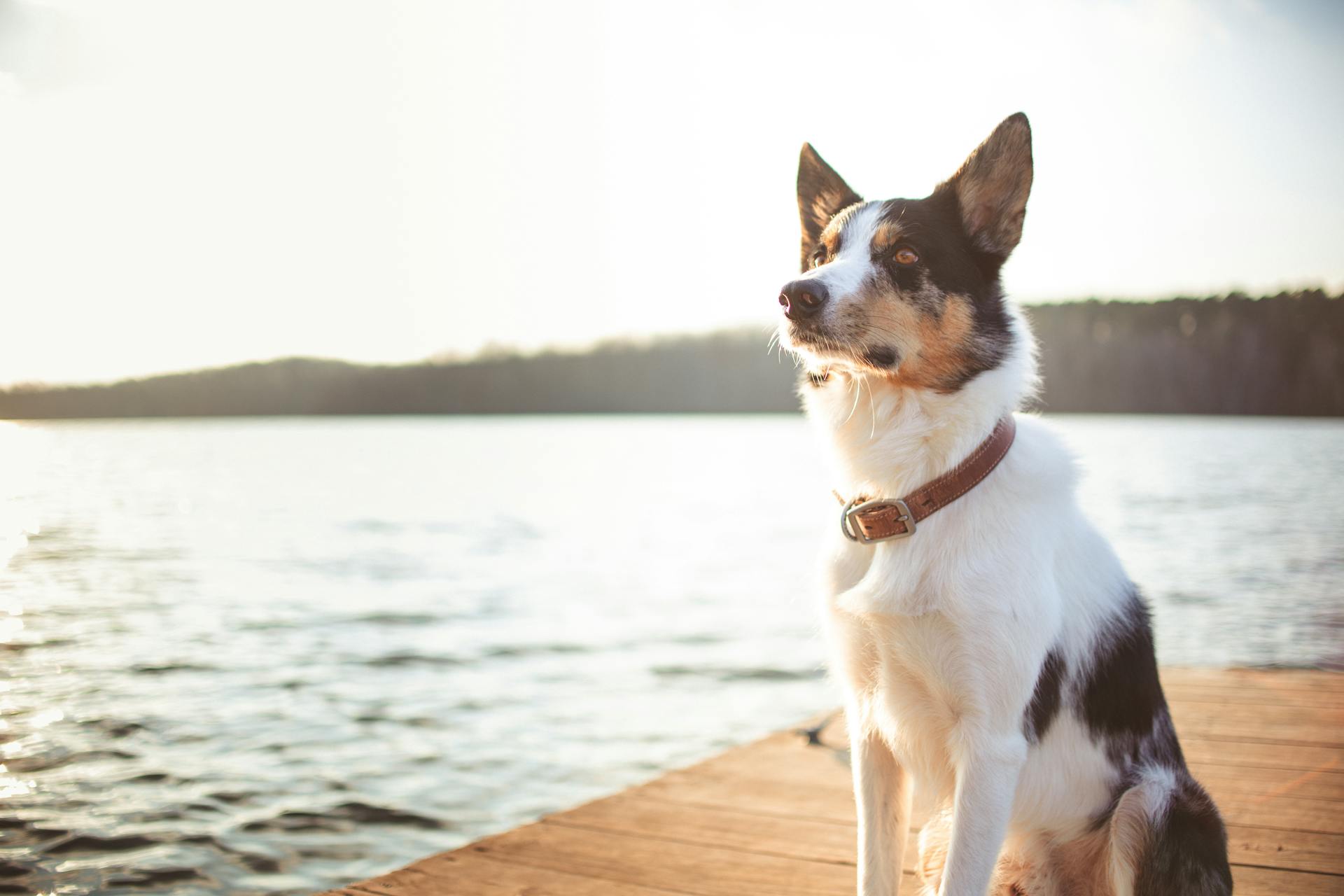
Tail docking is typically done in one of two ways, either by constricting the blood supply to the tail with a rubber band for a few days until the tail falls off or by cutting the tail with a specially designed tool called an Emasculator, which minimizes blood loss and trauma.
This method has been used for centuries in certain breeds that were primarily used for work. The Emasculator is a double-action stainless steel tool designed to cut the tail with minimal blood loss.
Veterinary surgeons usually don't use sutures for this procedure, but they may be necessary for larger dogs or if the dog is experiencing excessive bleeding.
What is the Procedure?
The tail docking procedure is a surgical process that involves removing a portion of a dog's tail. It's typically carried out by a veterinarian using a specially designed tool called an Emasculator.
This tool is designed to cut the tail with minimal blood loss as blood vessels are crushed. The procedure is usually done under local anesthesia to minimize pain and discomfort for the dog.
Veterinary surgeons may not use sutures with this procedure, but they may be necessary for larger dogs or if the dog is experiencing excessive bleeding.
Does It Hurt a Puppy?
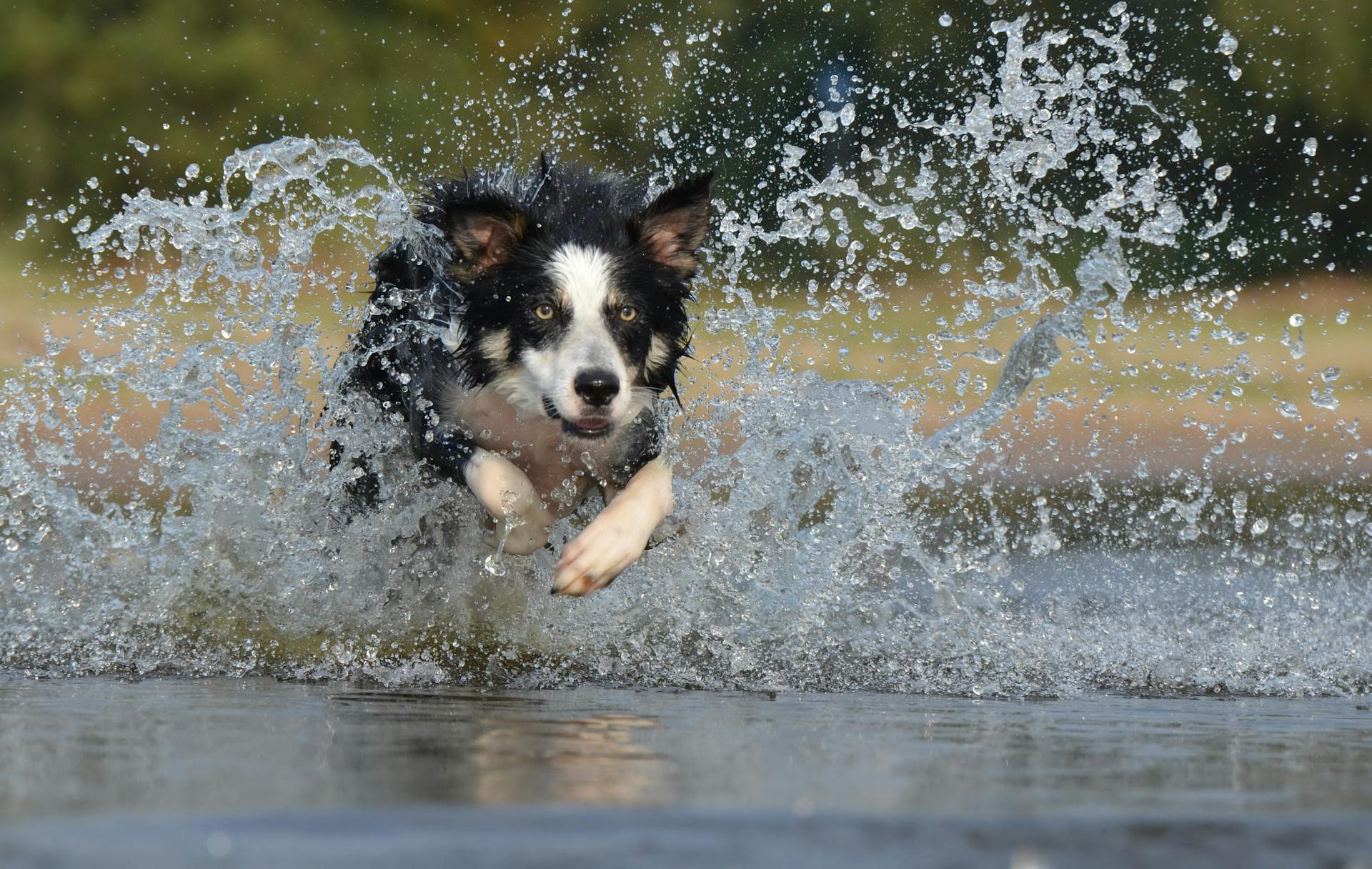
When puppies are tiny, docking is carried out, and their eyes are not yet open.
Their eyes are not yet open and long experience indicates that if carried out correctly, the procedure causes little discomfort or pain.
Puppies will immediately return to their dam to feed after docking.
There is no evidence that development or weight gain is in any way arrested by the docking procedure.
A dog which has been docked as a puppy has no problems with balance or communication.
Broaden your view: Yellow Labrador Eyes
Reasons for Docking
Docking is often done for appearance, as it's considered a "breed standard" for many breeds, including Airedale Terriers, Boxers, and Rottweilers.
However, there are other reasons for docking, which might surprise you. Injuries are one reason - for example, working dogs on farms or hunting dogs may dock their tails to prevent injuries.
Some breeds, like German Shorthaired Pointers and Vizslas, are prone to wagging their tails against objects, which can cause injuries. Docking can help prevent this.
Curious to learn more? Check out: Breeds of Dogs with Docked Tails

The procedure is usually performed when the puppy is only a few days old, and many vets don't use anesthesia, even though it causes pain. This raises questions about the ethics of docking.
In addition to injuries, docking can also prevent the spread of infection and fecal matter build-up for dogs with longer hair, like Spaniels.
Evidence Required in Legal Cases
If you're planning to dock your dog's tail for a specific reason, you'll need to gather some important paperwork.
A letter from a relevant professional, such as a gamekeeper, land occupier, or pest control worker, is crucial in supporting your case.
This letter should confirm that the breeder of the dog is known to them and that the dog's ancestors have been used for work on their land or in their shoot.
You'll also need to take any available paperwork with you to the vet, including printouts of relevant documents and proofs of working status.
It's essential to have all this evidence in order to get approval for tail docking.
Breeds and Showing

In Northern Ireland, the rules around showing docked dogs are pretty clear-cut. A dog that had its tail removed before January 1, 2013, can still be shown at all dog shows in Northern Ireland for the rest of its life.
If a dog's tail is removed after January 1, 2013, it can't be shown at any dog shows in Northern Ireland where the public pays a fee to get in.
Interestingly, the rules around tail docking in Northern Ireland are set out in the Animal Welfare (Northern Ireland) Act 2011 and the NI Docking of Working Dogs Tails Regulations.
England
In England, the laws surrounding tail docking are quite specific. A dog whose tail has been wholly or partly removed on or after 6 April 2007 may not be shown at any shows in England where the public are charged a fee for admission.
The Animal Welfare Act 2006 contains a general ban on the tail docking of dogs, with limited exemptions. These exemptions allow certain types of working dogs to have their tails docked by a veterinary surgeon.

To qualify for the exemption, the dog must be a spaniel, terrier, hunt point retrieve breed, or their crosses, and the owner must provide evidence that the dog is likely to work in one of the specified areas. The veterinary surgeon must also certify that they have seen this evidence.
If a dog's tail has been docked for medical treatment, it is exempt from the ban. However, the owner must ensure that the dog is microchipped before it is three months old.
Here are the specific requirements for working dogs in England:
- Owners and keepers must ensure that the tail docking is undertaken in accordance with the law.
- The dog must be microchipped before it is three months old.
- Veterinary surgeons are the only persons who are allowed to decide that a dog may have its tail docked.
A current shotgun or firearm certificate issued to the owner of the dog, or to the agent or employee of the owner most likely to be using the dog for work in connection with the lawful shooting of animals, is required as evidence.
Wales
In Wales, there are specific rules regarding working dogs and tail docking. The docking of dogs' tails has been banned in Wales since 27 March 2007, but certain types of working dogs are exempt from the ban.

To qualify for an exemption, your dog must be of a specific breed or type, such as a Spaniel, Terrier, or Hunt Point Retrieve. Here are some examples of breeds that are eligible:
- Spaniels – English Springer Spaniel, Welsh Springer Spaniel Cocker Spaniel, but not any combinations of breeds
- Terriers – Jack Russell Terrier, Cairn Terrier, Lakeland Terrier Norfolk Terrier but not any combinations of breeds
- Hunt Point Retrieve – Braque Italian, Brittany, German Long-Haired Pointer, German Short-Haired Pointer, German Wirehaired Pointer, Hungarian Vizsla, Hungarian Wire Haired Vizsla, Italian Spinone, Spanish Water Dog, Weimaraner, Korthals Griffon, Slovakian Rough Haired Pointer, Large Munsterlander, Small Munsterlander
If you own a working dog that has had its tail docked, you'll need to ensure that it was done in accordance with the regulations. This includes getting a certificate from the breeder or seller and microchipping your dog before it's three months old.
Docked Dog Breeds
Some breeds have their tails docked, which means they're surgically shortened. This is a common practice in many breeds, including Airedale Terriers, Boxers, Doberman Pinschers, and Rottweilers.
Many breeds have their tails docked when they're newborns, and it's a tradition that's been passed down through generations. However, it's worth noting that not all breeds have their tails docked.
Here are some breeds where puppies are born without tails, making them naturally docked breeds:
- Australian Shepherds
- Australian Stumpy Tail Cattle Dogs
- Brittany Spaniels
- Danish Swedish Farmdogs
- Jack Russell Terriers
- Pembroke Welsh Corgis
- Schipperkes
These breeds have a genetic mutation that results in a naturally short tail, eliminating the need for surgical docking.
Our View and Alternatives
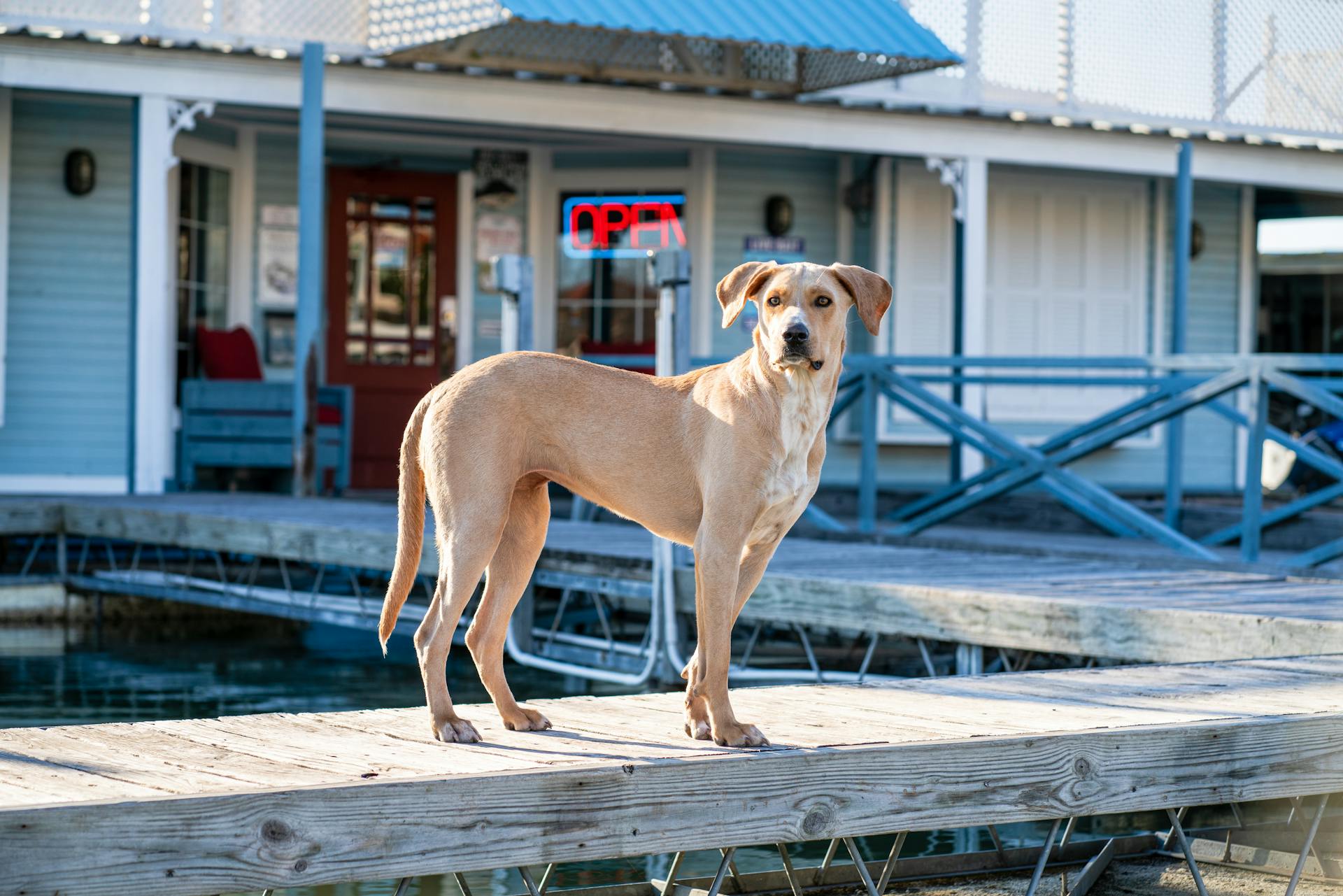
If you're considering getting a pup with a short tail, consider adopting a dog from a breed with a naturally bobbed tail, such as an Australian Shepherd.
Tail docking should be banned as a procedure for all breeds of dogs, unless it is carried out by a veterinary surgeon for medical reasons.
Puppies suffer unnecessary pain as a result of tail docking, and research has shown that it's not an effective way to prevent tail injuries.
Approximately 500 dogs would need to be docked in order to prevent a single tail injury, making it a questionable practice.
We continue to call for a complete ban on tail docking of puppies for non-therapeutic reasons across the UK.
Frequently Asked Questions
Is dog tail docking illegal in the US?
No, dog tail docking is not entirely illegal in the US, but it's heavily regulated and requires a licensed veterinarian's approval.
Sources
- https://www.avma.org/resources-tools/animal-health-and-welfare/animal-welfare/canine-tail-docking-faq
- https://www.petmd.com/dog/procedure/tail-docking-in-dogs
- https://www.bva.co.uk/take-action/our-policies/tail-docking-in-dogs/
- https://basc.org.uk/gundogs/advice/tail-docking/
- https://medical-tools.com/shop/blog/post/methods-of-tail-docking-in-dogs/
- https://www.caninejournal.com/dog-tail-docking/
Featured Images: pexels.com


